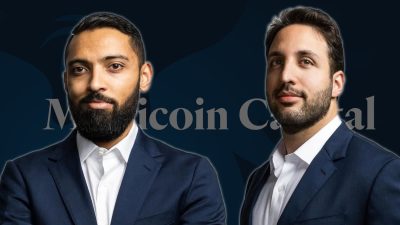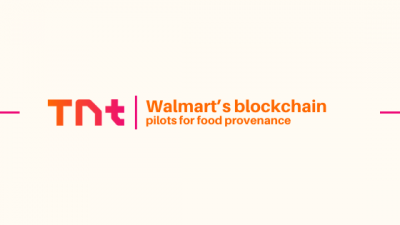Alternative investment markets face a persistent problem: opacity. Complex asset classes remain inaccessible to many institutional investors, not because of capital constraints, but because of knowledge barriers. Insurance‑linked securities exemplify this challenge, ~$55-57B outstanding cat-bond/ILS, with broader ILS capacity around $110-$120Br market, operating at the intersection of actuarial science and capital markets, speaking languages that rarely translate well between domains. The result is untapped opportunity on one side and skeptical capital on the other.
Yaniv Bertele, founder of EverOak Innovations, is tackling this translation problem with artificial intelligence. With a background spanning theoretical physics, mathematics, and venture capital, Bertele recognized that the life settlements market, where investors purchase life insurance policies from seniors, suffers from a fundamental technology deficit. Traditional underwriting methods rely on proprietary, rules‑based methods with documented provider‑to‑provider dispersion; our goal is reproducible, auditable estimates with confidence intervals and ongoing A/E calibration.
His solution involves building proprietary AI systems that transform how longevity is assessed, creating what he calls a “Google Translate” for insurance products. By replacing opacity with algorithmic transparency, EverOak is opening doors for institutional capital that previously remained closed, while simultaneously improving returns through more accurate risk assessment. The approach represents a broader shift in alternative investing: letting technology bridge expertise gaps rather than expecting investors to become domain experts.
From Opaque Underwriting to Objective Assessment
For decades, life settlement investing operated as something of a black box. Asset managers would acquire policies, hire medical underwriting firms to estimate life expectancies, and present investors with projected returns. The problem was consistency and verifiability. Different underwriters examining the same medical records could produce wildly divergent life expectancy estimates. Methodologies remained proprietary and unexplained. Investors essentially had to trust expert judgment without the ability to independently validate assumptions.
This opacity created multiple problems. Institutional investors, particularly pension funds, endowments, and insurance companies with rigorous due diligence requirements, struggled to get comfortable with the asset class. How do you build a fiduciary case for an investment when you can’t explain how the underlying assets are valued? The lack of standardization also meant that managers couldn’t easily scale operations or provide consistent reporting across portfolios.
Yaniv Bertele saw the technology gap as both a problem and an opportunity. His background in physics and mathematics had instilled a preference for measurable, replicable processes over expert intuition. “Developing the right technology that will allow us to actively, accurately, objectively, transparently be able to assess an individual’s life expectancy based entirely on their medical[1] record” became the foundational goal for EverOak’s technology development.
The AI approach starts with medical records, typically hundreds of pages documenting an individual’s health history, diagnoses, treatments, medications, and test results. Rather than relying on human underwriters to subjectively interpret this information, machine learning algorithms process the data systematically. The models are trained on extensive datasets linking medical conditions and histories to actual mortality outcomes, allowing the system to identify patterns and correlations that inform life expectancy predictions.
The advantages extend beyond accuracy. Algorithmic assessment provides consistency; the same medical profile will generate the same life expectancy estimate every time, augment expert judgment, standardize process, and scale capacity. The process is auditable; every factor contributing to an estimate can be identified and explained. And the methodology is scalable; once built, the system can process thousands of policies with the same rigor applied to each one.
For institutional investors, this technological foundation changes the conversation. Rather than asking them to trust proprietary expertise, EverOak can demonstrate how assessments are made, provide confidence intervals around estimates, and show validation studies comparing predictions to actual outcomes. The investment proposition shifts from “trust our experts” to “trust our data and methodology,” a significantly more comfortable position for fiduciary capital.
The competitive advantage is substantial. Traditional asset managers relying on manual underwriting face capacity constraints and inconsistency challenges. Technology-driven approaches scale differently. As machine learning models process more data, they improve, creating a virtuous cycle where better predictions lead to better portfolio performance, which attracts more capital and more data, which further refines the models.
Creating a “Google Translate” for Insurance Products
The deeper challenge Bertele identified goes beyond individual policy assessment to the fundamental communication gap between insurance and capital markets. These industries speak different languages, use different metrics, and think about risk in fundamentally different ways. Insurance professionals discuss combined ratios, loss development triangles, and
[1] Medical records are accessed under HIPAA‑compliant authorizations; training uses de‑identified data per HHS Safe Harbor or Expert Determination guidance
actuarial reserve adequacy. Capital markets investors analyze Sharpe ratios, volatility, and correlation matrices.
“What technology does in that perspective is create a bridge, a Google Translate, if you will, that takes the underlying asset class being an insurance or life insurance-driven product and translate it into an investment product,” Bertele explains.
This translation function operates on multiple levels. At the most basic level, it means converting policy characteristics into financial metrics that investors recognize. Instead of presenting a portfolio as “male lives aged 75-85 with cardiovascular conditions,” the technology translates this into expected IRR, duration, volatility estimates, and correlation profiles. The underlying asset remains the same, but the language shifts to capital markets terminology.
More sophisticated translation involves comparative analysis. EverOak’s systems can model how life settlement portfolios would have performed through various market environments and compare those results to traditional asset classes. This creates common ground, investors can see how the asset class behaves relative to instruments they already understand, making informed allocation decisions possible.
The educational barrier dissolves when you can show, rather than tell. Rather than requiring investors to become insurance experts, the technology allows them to evaluate life settlements using their existing analytical framework. “Without bringing in a technological structure that would be able to transparently bridge the knowledge gap in between those two markets, that would be difficult, and I think that’s exactly what the algorithms are doing here,” Bertele notes.
This bridge-building has strategic implications beyond EverOak. As more capital flows into insurance-linked securities through technology-enabled access, the entire market becomes more efficient. Pricing improves as competition increases. Liquidity develops as more participants enter. Standardization emerges as technology platforms establish common languages and metrics.
The Broader Technology Transformation
Yaniv Bertele’s work at EverOak represents a specific application of a broader trend: using artificial intelligence to democratize access to alternative investments. For too long, certain asset classes remained exclusive not because of capital requirements but because of knowledge barriers and operational complexity.
Technology is systematically dismantling these barriers. Fractional real estate platforms use algorithms to value properties and create liquid markets for traditionally illiquid assets. Art investment funds employ machine learning to predict appreciation and authenticate pieces. Private credit marketplaces use alternative data and AI underwriting to expand beyond traditional banking relationships.
Life settlements fit this pattern perfectly, a mathematically sound asset class held back by operational limitations and expertise gaps. By solving the technology problem, the investment opportunity becomes accessible to institutional capital that could benefit from the diversification and returns profile but previously lacked a comfortable entry point.
The vision extends beyond current capabilities. Bertele sees potential for marketplace development where technology enables direct connections between policy sellers and institutional buyers, reducing friction and improving economics for both sides. Enhanced transparency could attract retail capital through structured products, further expanding the market. Continuous algorithm improvement could unlock policy types currently deemed too difficult to underwrite.
For the insurance-linked securities market broadly, technology-driven transparency may prove transformative. As opacity gives way to algorithmic clarity, more capital will flow to these uncorrelated return opportunities. The beneficiaries will be diverse: seniors gain better pricing for policies they no longer need, investors access genuine portfolio diversification, and innovation flourishes as technology reduces barriers to entry.
Yaniv Bertele’s approach demonstrates that the future of alternative investing isn’t just about finding new asset classes, it’s about making existing opportunities accessible through technology. When AI can translate complexity into clarity, entire markets open up.
Information contained on this page is provided by an independent third-party content provider. Binary News Network and this Site make no warranties or representations in connection therewith. If you are affiliated with this page and would like it removed please contact [email protected]



Comments